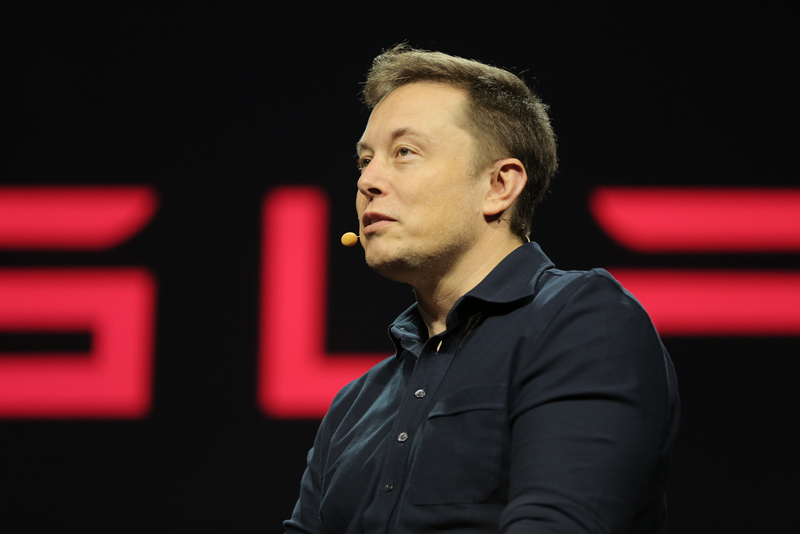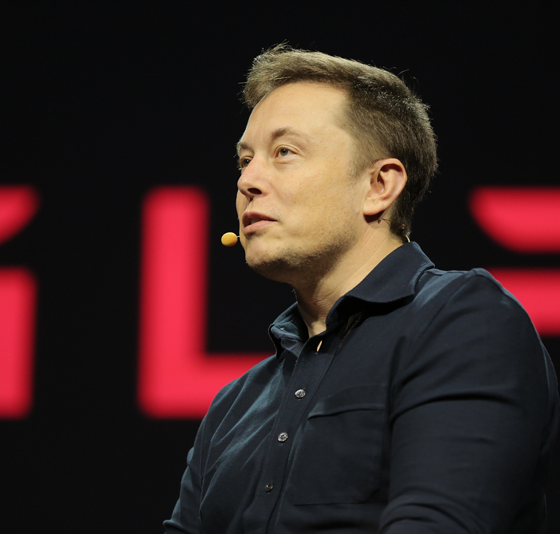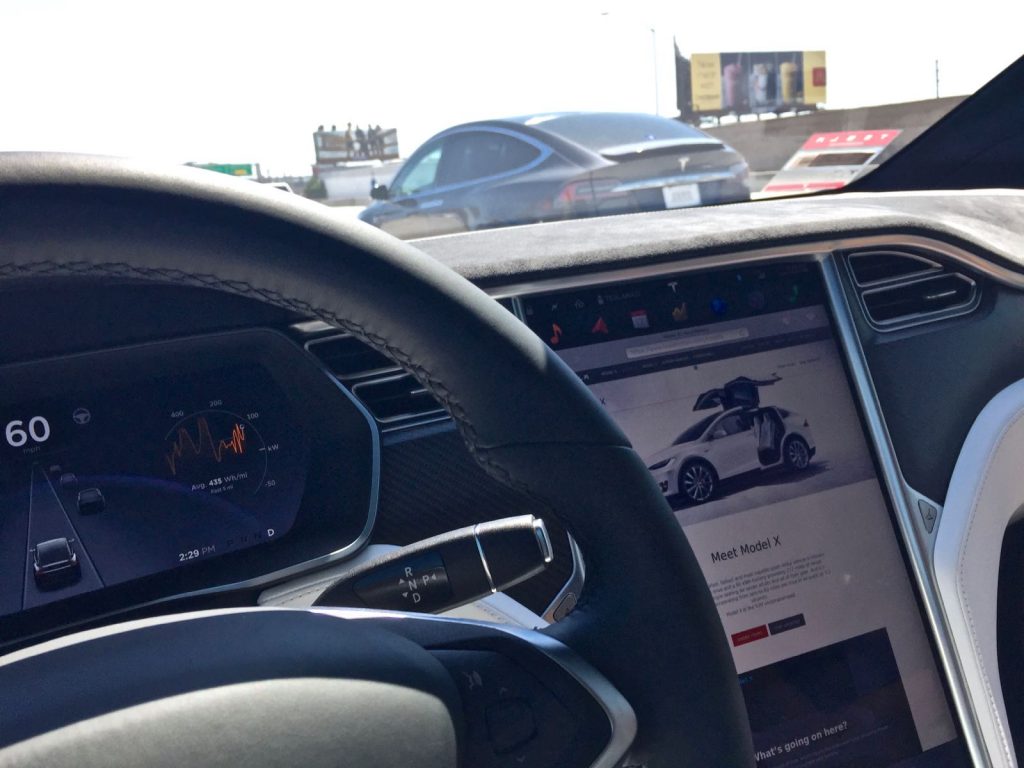Elon Musk’s cautionary statements about uncontrolled experimentation with artificial intelligence (AI) have caused some to ridicule him as a fear-monger, and have given many in the mainstream press the idea that he is opposed to using AI, which is very far from the truth. In fact, AI is a major component of Tesla’s Autopilot system, and the company applies it in several other areas as well.
It was only recently that Tesla publicly revealed that it is working on its own AI hardware. At the NIPS machine learning conference in December, Elon Musk announced that Tesla is “developing specialized AI hardware that we think will be the best in the world.” The company has offered few details, but it’s widely assumed that the main application will be processing the algorithms for Tesla’s Autopilot software.
As Bernard Marr reports in a recent article in Forbes, there’s little doubt that Tesla is way ahead of its potential rivals in the data-gathering department. Every Model S and X built with the Autopilot hardware suite, which was introduced in September 2014, has the potential to become self-driving, and all Tesla vehicles, Autopilot-enabled or not, continually gather data and send it to the cloud. The company has many more sensors on the roads than any of its Detroit or Silicon Valley rivals, and the number will mushroom when Model 3 production hits its stride.
Tesla is crowd-sourcing data not only from its vehicles, but could one day obtain data on its drivers through internal cameras that detect hand placement on instruments or a person’s state of alertness. The company uses the information not only to improve Autopilot by generating data-dense maps, but also to diagnose driving behavior. Many believe that this sort of data will prove to be a valuable commodity that could be sold to third parties (much as data on web-browsing habits is today). McKinsey and Company has estimated that the market for vehicle-gathered data could be worth $750 billion a year by 2030.
Forbes explains that the AI built into Tesla’s system operates at several levels. Machine learning in the cloud educates the entire fleet, while within each individual vehicle, “edge computing” can make decisions about actions a car needs to take immediately. There’s also a third level of decision-making, in which cars can form networks with other Tesla vehicles nearby in order to share local information. In the future, when there are lots of autonomous cars on the road, these networks could also interface with cars from other makers, and systems such as traffic cameras, road-based sensors, and mobile phones.
At this point, no one knows what new forms of AI technology the mad scientists in Palo Alto are cooking up, but Forbes found some clues on the Facebook page of Tesla’s hardware partner Nvidia: “In contrast to the usual approach to operating self-driving cars, we did not program any explicit object detection, mapping, path planning or control components into this car. Instead, the car learns on its own to create all necessary internal representations necessary to steer, simply by observing human drivers.”
This unsupervised learning model contrasts with the more familiar approach of supervised learning, in which algorithms are trained beforehand about right or wrong decisions. Each approach has its pros and cons, and it’s likely that Tesla’s strategy includes both.
Forbes reports that Tesla’s use of AI is not limited to Autopilot – the company employs machine learning in the design and manufacturing processes, to process customer data, and even to scan the text in online forums for insights into commonly-reported problems. It’s ironic that some in the press choose to portray Elon Musk as an AI Luddite, when in fact Tesla may be one of the most sophisticated users of the technology.
===
Note: Article originally published on evannex.com, by Charles Morris
Source: Forbes

News
Tesla earns top honors at MotorTrend’s SDV Innovator Awards
MotorTrend’s SDV Awards were presented during CES 2026 in Las Vegas.

Tesla emerged as one of the most recognized automakers at MotorTrend’s 2026 Software-Defined Vehicle (SDV) Innovator Awards.
As could be seen in a press release from the publication, two key Tesla employees were honored for their work on AI, autonomy, and vehicle software. MotorTrend’s SDV Awards were presented during CES 2026 in Las Vegas.
Tesla leaders and engineers recognized
The fourth annual SDV Innovator Awards celebrate pioneers and experts who are pushing the automotive industry deeper into software-driven development. Among the most notable honorees for this year was Ashok Elluswamy, Tesla’s Vice President of AI Software, who received a Pioneer Award for his role in advancing artificial intelligence and autonomy across the company’s vehicle lineup.
Tesla also secured recognition in the Expert category, with Lawson Fulton, a staff Autopilot machine learning engineer, honored for his contributions to Tesla’s driver-assistance and autonomous systems.
Tesla’s software-first strategy
While automakers like General Motors, Ford, and Rivian also received recognition, Tesla’s multiple awards stood out given the company’s outsized role in popularizing software-defined vehicles over the past decade. From frequent OTA updates to its data-driven approach to autonomy, Tesla has consistently treated vehicles as evolving software platforms rather than static products.
This has made Tesla’s vehicles very unique in their respective sectors, as they are arguably the only cars that objectively get better over time. This is especially true for vehicles that are loaded with the company’s Full Self-Driving system, which are getting progressively more intelligent and autonomous over time. The majority of Tesla’s updates to its vehicles are free as well, which is very much appreciated by customers worldwide.
Elon Musk
Judge clears path for Elon Musk’s OpenAI lawsuit to go before a jury
The decision maintains Musk’s claims that OpenAI’s shift toward a for-profit structure violated early assurances made to him as a co-founder.

A U.S. judge has ruled that Elon Musk’s lawsuit accusing OpenAI of abandoning its founding nonprofit mission can proceed to a jury trial.
The decision maintains Musk’s claims that OpenAI’s shift toward a for-profit structure violated early assurances made to him as a co-founder. These claims are directly opposed by OpenAI.
Judge says disputed facts warrant a trial
At a hearing in Oakland, U.S. District Judge Yvonne Gonzalez Rogers stated that there was “plenty of evidence” suggesting that OpenAI leaders had promised that the organization’s original nonprofit structure would be maintained. She ruled that those disputed facts should be evaluated by a jury at a trial in March rather than decided by the court at this stage, as noted in a Reuters report.
Musk helped co-found OpenAI in 2015 but left the organization in 2018. In his lawsuit, he argued that he contributed roughly $38 million, or about 60% of OpenAI’s early funding, based on assurances that the company would remain a nonprofit dedicated to the public benefit. He is seeking unspecified monetary damages tied to what he describes as “ill-gotten gains.”
OpenAI, however, has repeatedly rejected Musk’s allegations. The company has stated that Musk’s claims were baseless and part of a pattern of harassment.
Rivalries and Microsoft ties
The case unfolds against the backdrop of intensifying competition in generative artificial intelligence. Musk now runs xAI, whose Grok chatbot competes directly with OpenAI’s flagship ChatGPT. OpenAI has argued that Musk is a frustrated commercial rival who is simply attempting to slow down a market leader.
The lawsuit also names Microsoft as a defendant, citing its multibillion-dollar partnerships with OpenAI. Microsoft has urged the court to dismiss the claims against it, arguing there is no evidence it aided or abetted any alleged misconduct. Lawyers for OpenAI have also pushed for the case to be thrown out, claiming that Musk failed to show sufficient factual basis for claims such as fraud and breach of contract.
Judge Gonzalez Rogers, however, declined to end the case at this stage, noting that a jury would also need to consider whether Musk filed the lawsuit within the applicable statute of limitations. Still, the dispute between Elon Musk and OpenAI is now headed for a high-profile jury trial in the coming months.
News
Tesla Giga Shanghai celebrates 5 million electric drive unit milestone
The milestone was celebrated by the company in a post on its official Weibo account.
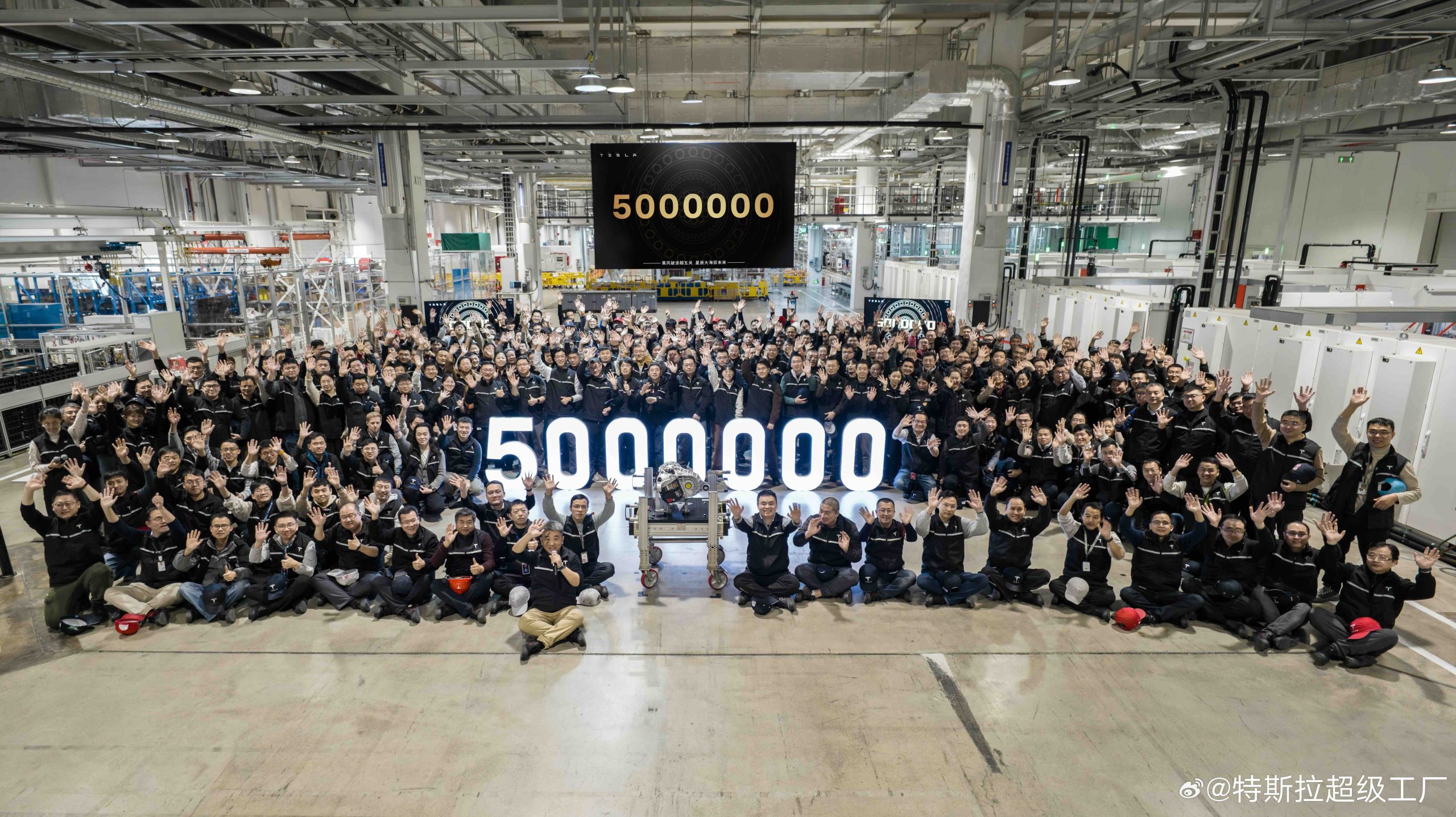
Tesla China has reached another manufacturing milestone at Gigafactory Shanghai, rolling out the facility’s 5 millionth locally produced drive unit.
The milestone was celebrated by the company in a post on its official Weibo account. In its post, the Giga Shanghai team could be seen posing with the 5 millionth drive unit.
Giga Shanghai’s major benchmark
The milestone drive unit was produced at Gigafactory Shanghai, which produces the Model Y and the Model 3. In a release, Tesla China noted that its three-in-one integrated electric drive system combines the motor, gearbox, and inverter into a single compact assembly. This forms a powerful “heart” for the company’s electric cars.
Tesla China also noted that its drive units’ integrated design improves energy conversion efficiency while reducing overall weight and complexity, benefits that translate into stronger performance, improved handling, and longer service life for its vehicles.
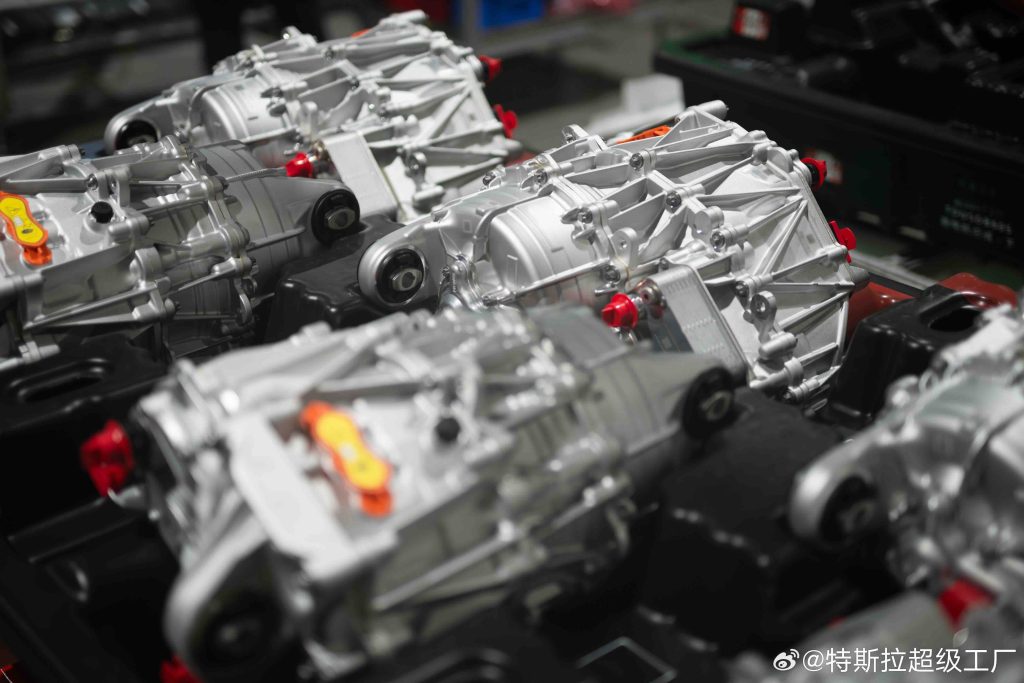
The new milestone builds on earlier achievements at the same site. In July 2024, Tesla announced that its 10 millionth electric drive system globally had rolled off the line at the Shanghai plant, making it the first self-produced Tesla component to reach that volume.
More recently, the factory also produced its 4 millionth China-made vehicle, a Model Y L. The factory has also continued hitting global production milestones, rolling out Tesla’s 9 millionth EV worldwide late last year, with the landmark vehicle being a Tesla Model Y.
Tesla China’s role
Construction of Giga Shanghai began in January 2019, with production starting by the end of that year. This made it the first wholly foreign-owned automotive manufacturing project in China. The facility began delivering Model 3 vehicles locally in early 2020 and added Model Y production in 2021. The plant is now capable of producing about 1 million vehicles annually.
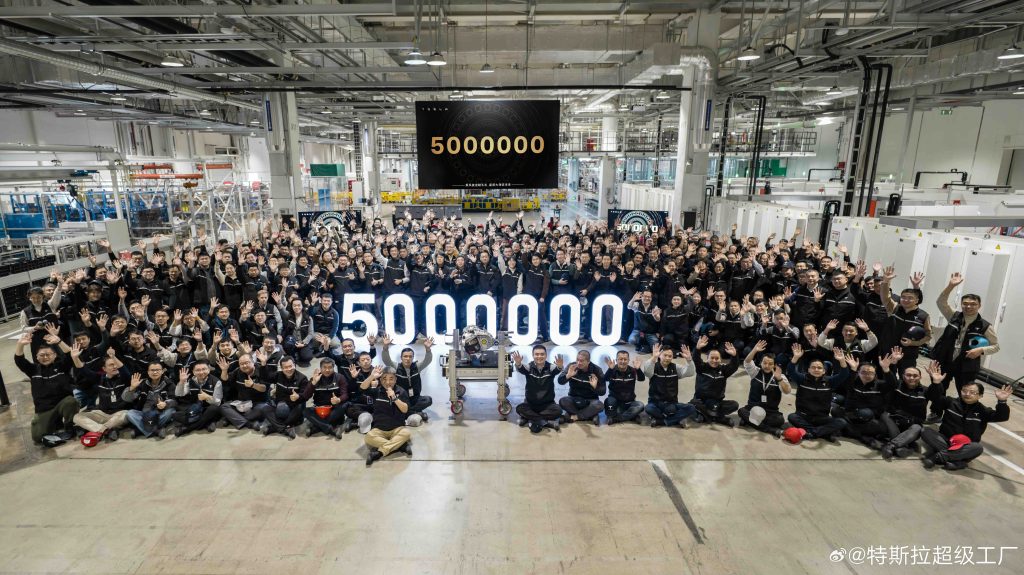
Throughout 2025, Giga Shanghai delivered 851,732 vehicles, representing a 7.08% year-on-year decline, according to data compiled by CNEVPost. Even so, recent months showed renewed momentum.
In December alone, Tesla China recorded wholesale sales of 97,171 vehicles, including domestic deliveries and exports, making it the company’s second-best monthly total on record, per data from the China Passenger Car Association. Retail sales during December reached roughly 94,000 units, up about 13% year over year.
